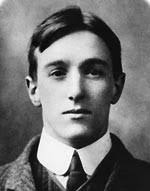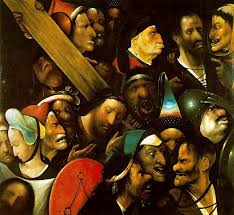The Madness of Mass Dance
by Con Chapman
We walk, each with ear phones in place, as if through so many self-contained concert halls; the crowd of commuters who disembark from the train, the hordes of travelers moving through an airport terminal.

South Station, Boston
Each person listens to his or her own private sound track, and everyone gets where they're going. If the speakers in those little white buds were directed outwards and cranked up a notch, of course, the platform or concourse through which the people pass would be transformed. Where once there was order, a tinny cacophony would prevail.
A thousand individual choices in the same place is made possible by electronic privacy, and yet something is lost; the sense of bogus community that is imposed by those high-minded municipal reading projects in which citizens are encouraged to read and talk about the same book for a season. Wouldn't we feel better about ourselves and our fellow man and woman if we all—danced together on our way to work?

Busby Berkeley dancers
I know I would. I look about me as the 6:05 a.m. train comes to a stop and see a number of people who I know would enjoy Chaka Khan's “I Feel for You”—if only they could hear it. Together, we might glide across the slick stone floors of South Station in unison, with a segue into a Busby Berkeley-style formation during Stevie Wonder's chromatic harmonica break. Alas, they can't hear it.

Robin Collingwood: Fortunately, did not live to see “Pants Off Dance Off”
Dance, according to British philosopher Robin Collingwood, was the original art form, and yet it has devolved into a spectator sport today. Less than a generation ago a man and a woman could be expected to continue social dancing into their dotage, because there were modes of dance that were calibrated to reflect the decline in human agility with age. The couple that danced the Charleston or jitterbug in their youth could waltz or fox trot in their golden years. You paid your respects to another man's tastes by dancing with his wife, perhaps whetting your appetite for your own.
Like sex, dance has both a social aspect and an irrational side. Outbreaks of mass communal dancing—sometimes referred to as “choreomania”—occurred in Europe with some frequency in Europe between the 14th and the 18th centuries. In some cases there was a link to a concurrent phenomenon—one variety that came to be known as St. John's Dance sprang up during the time of the Black Death.


St. Anthony's Fire, St. John's Dance
The Dancing Plague of 1518 manifested itself along pilgrimage routes. St. Anthony's Fire, a mania accompanied by visions similar to those produced by the drug LSD, has been traced to consumption of grain products contaminated with fungus.

“Brother” Jack McDuff
If Freud is right about anything, it is that we suppress the irrational at our peril—it is, paradoxically, irrational to ignore the irrational. This is not to suggest that you should go nuts when communal dancing takes over your town. I would recommend starting out with something really cool by “Brother” Jack McDuff, jazz organist, broadcast over the emergency speakers at the National Guard Armory used to warn of tornados.

“I have to cancel your appointment. My last patient ran over and I have a rhumba lesson at 3:30.”
You may arrive at the office a bit sweatier than you normally would, but that's a small price to pay for the feelings of communal pride and bonhomie that you will have engendered.

Just remember—dance at the green, not in between.
|
2
favs |
1240 views
4 comments |
631 words
All rights reserved. |
Author's Note
The author has not attached a note to this story.
Other stories by Con Chapman
Tags
This story has no tags.
Con, I like this a lot. As I read through I was serenaded in my head by the Magnetic Fields,
"Busby Berkeley Dreams". Their song is still with me as I type this. This piece is so well done.
Fave
David, thanks. There was an outbreak of choreomania in Scotland--of all places--that I've been trying to track down for some time without success.
Clever. The tongue in cheek can raise more serious thoughts than the fist in the air.
I neglected to mention St. Vitus, patron saint of 50s teen dance shows.